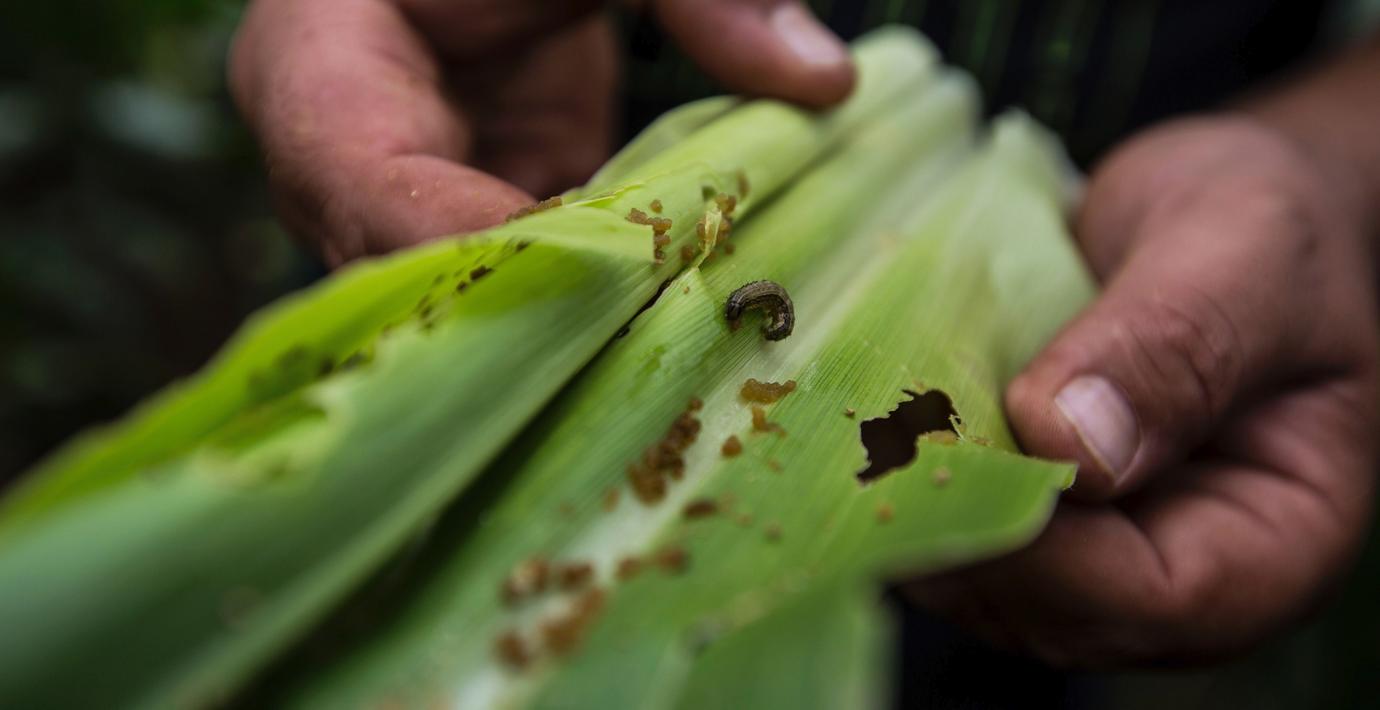
Armélarver hotar matförsörjning i Afrika
Horder av armélarver som tuggar i sig framför allt majs har drabbat majsfält i flera länder i främst södra Afrika. Nu hotas matförsörjningen, varnar FN:s mat- och jordbruksorgan FAO. Plågan är ett hårt slag mot länderna som tidigare år har haft problem med torka.
– Det är förmodligen bara en tidsfråga innan hela regionen påverkas, säger FAO-koordinatorn David Phiri till nyhetsbyrån AFP.
Under ett krismöte i Zimbabwes huvudstad Harare har det diskuterats hur man ska tackla larverna som äter upp grödor i Zambia, Zimbabwe, Sydafrika och Ghana. Det kommer även rapporter om att Malawi, Moçambique och Namibia är utsatta.
bakgrund
Armélarv
Wikipedia (en)
The African armyworm (Spodoptera exempta) also called okalombo, kommandowurm, or nutgrass armyworm, is an African moth. It is a very deleterious pest, capable of destroying entire crops in a matter of weeks. The larvae feed on all types of grasses, early stages of cereal crops (e.g., corn, rice, wheat, millet, sorghum), sugar cane, and occasionally on coconut. The armyworm gets its name from its habit of "marching" in large numbers from grasslands into crops. African armyworms tend to occur at very high densities during the rainy season, especially after periods of prolonged drought. During the long dry season in eastern Africa, population densities are very low. Because outbreaks are never observed during the dry season, it is called the "off-season" by those who monitor African armyworms.
S. exempta moths live about 10 days. The female can lay a maximum of about 1000 eggs in her lifetime. The ivory-coloured eggs of the African armyworm are laid in clusters on leaves. Eggs hatch in 2–5 days. Six larval (caterpillar) instars are completed in 2–3 weeks. Caterpillars occur in two morphologically distinct forms: a "gregarious" form, which is black with yellow stripes, and a solitary form, which is green or brown. The morphological form is determined by density — becoming "gregarious" at higher densities; it is these "gregarious" forms that cause outbreaks. However, the African armyworms do not exhibit the true gregarious behavior of locusts. Generally, African armyworms are not noticed by farmers until the caterpillars are 10 days old and change from green to black. In the last instar, larvae burrow 2–3 cm into the ground to pupate. Adults emerge in 7 to 10 days. The moths probably migrate over tens, and probably over hundreds, of kilometers between their emergence sites and their oviposition sites, causing outbreaks to occur suddenly in areas that were free of the pests for several months.
The species also occurs in Yemen, some Pacific islands, and parts of Australia.
Omni är politiskt obundna och oberoende. Vi strävar efter att ge fler perspektiv på nyheterna. Har du frågor eller synpunkter kring vår rapportering? Kontakta redaktionen